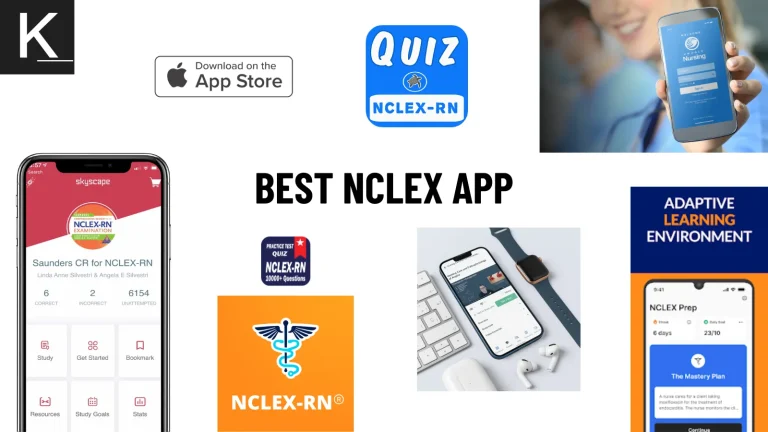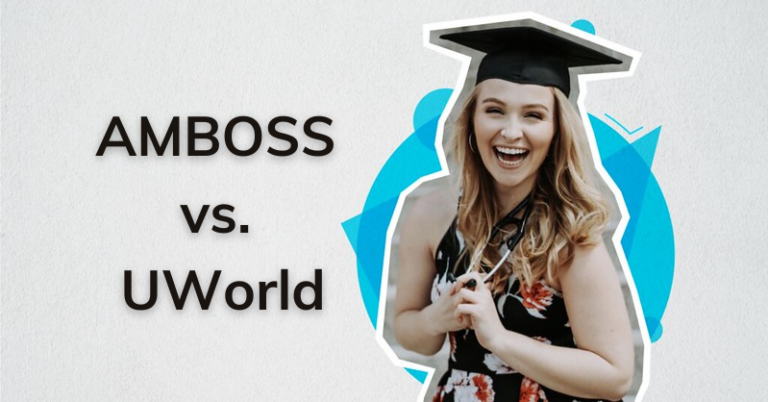You’ve just finished what could be the most crucial exam on your path to becoming a certified nurse – the NCLEX test. Now you have to wait for up to six weeks to get your official results.
But if patience isn’t your virtue, you can try the Pearson Vue Trick ( or PVT) to discover whether you’ve passed or failed the test.
What Is The Pearson Vue Trick (PVT) In NCLEX Exam?
The “Pearson Vue Trick” (PVT) is an unofficial method used by individuals taking certain professional exams, most notably the NCLEX for nursing, to try and get an early indication of whether they passed or failed their test by attempting to re-register for the exam on the Pearson Vue platform, where a specific message displayed during the registration process might suggest their result before receiving official notification; however, this method is not guaranteed to be accurate and should not be relied upon completely.
Although the Pearson Vue Trick is widely utilized within the nursing student community, it lacks formal endorsement or recognition by Pearson Vue and official nursing regulatory authorities. The efficacy of this trick rests solely on anecdotal evidence, with its reliability subject to considerable debate among academic and professional circles.
How To Do Pearson Vue Trick After Taking NCLEX Exam?
To perform the “Pearson Vue trick,” which is often used to get an early indication of NCLEX exam results, you log into the Pearson Vue website after taking the exam, attempt to re-register for the same exam, and analyze the system’s response: if it prevents you from re-registering due to already having taken the exam (a “good” pop-up), it is generally interpreted as a positive sign suggesting you likely passed; if it allows you to proceed with re-registration (a “bad” pop-up), it might indicate a potential failure, though this method is not foolproof and should be used with caution.
Key steps:
- Take the exam: Complete your NCLEX exam.
- Wait a few hours: Allow some time to pass after finishing the exam before attempting the trick.
- Log in to Pearson Vue: Access your Pearson Vue account.
- Try to re-register: Navigate to the exam registration page and attempt to sign up for the same exam again.
- Observe the pop-up message: Pay attention to the message displayed by the system; a “good” pop-up indicates you cannot register again due to already having taken the exam, while a “bad” pop-up allows you to continue with the registration process.
Important points to remember:
- Not guaranteed accuracy: This trick is not a definitive result and should not be considered a guaranteed indicator of your exam outcome.
- Use caution with credit card details: Some variations of the trick may involve entering incorrect credit card information, so be mindful of potential charges.
- Check official results: Always wait for your official exam results from the relevant board before making any decisions based on the Pearson Vue trick.
3 Types of NCLEX Pop-Ups in 2024
#1. Pearson Vue Trick: Good Pop Up
The “Good Pop-Up” from the Pearson Vue Trick is widely recognized by NCLEX candidates as a promising sign indicating potential success on their exam. This hopeful indicator occurs when a candidate, having just completed their NCLEX, attempts to re-register for the test on the Pearson Vue website.

Specifically, the Pearson Vue system displays the message, “Our records indicate that you have recently scheduled this exam. Another registration cannot be made at this time,” it is considered the Good Pop-Up. This message suggests that the system recognizes the candidate’s previous test session as likely successful, implying no further exam scheduling is necessary at that moment.
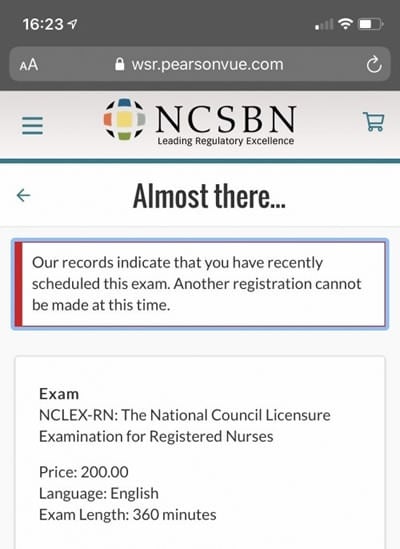
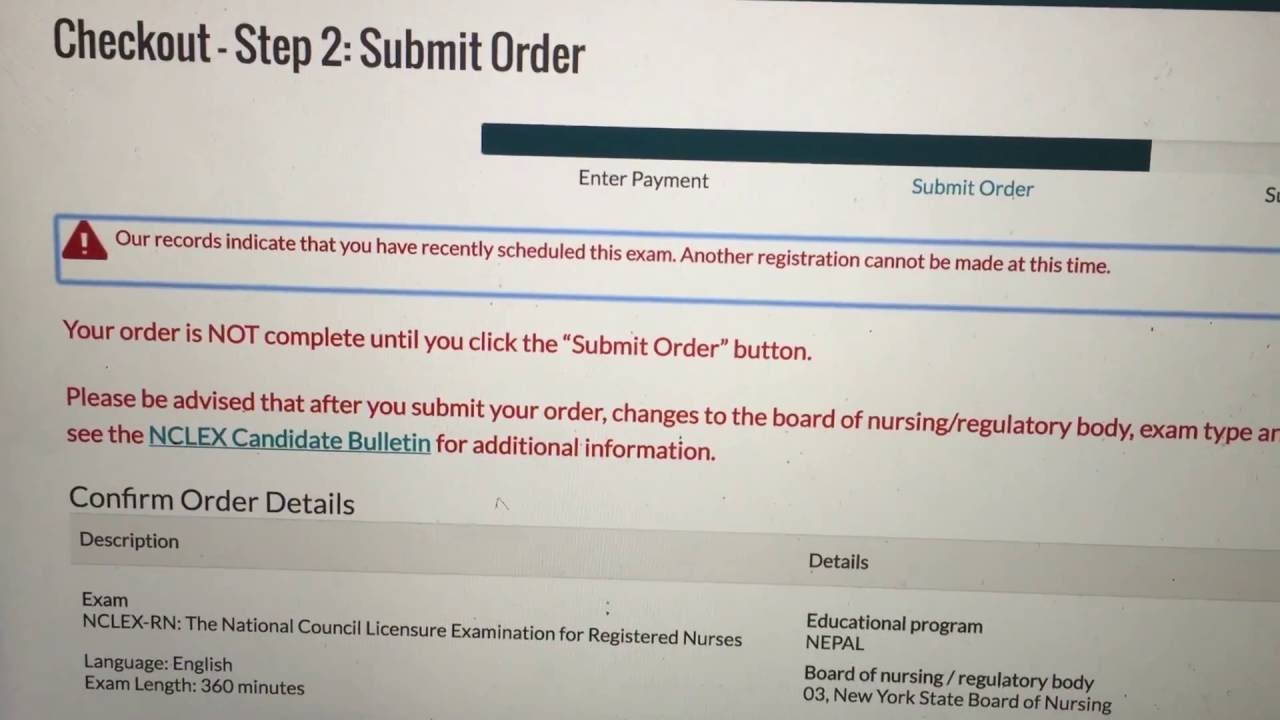
Examples of PVT good popup in 2024
This pop-up does not guarantee a pass, but it has become a widely discussed and anticipated response among nursing students, serving as a psychological cushion until the official results are confirmed by the relevant nursing regulatory bodies.
Dr Cheryl Ross
#2. Pearson Vue Trick: Bad Pop Up
After completing the exam, you can attempt to register for another exam through the Pearson Vue (PV) website.
If you receive a message declining your payment with a short reason, it’s considered a bad pop-up for the NCLEX exam, suggesting that you have likely failed.
The bad pop-up typically reads: “The payment was decline. Reason: Contact your credit card company or use a different credit card.”
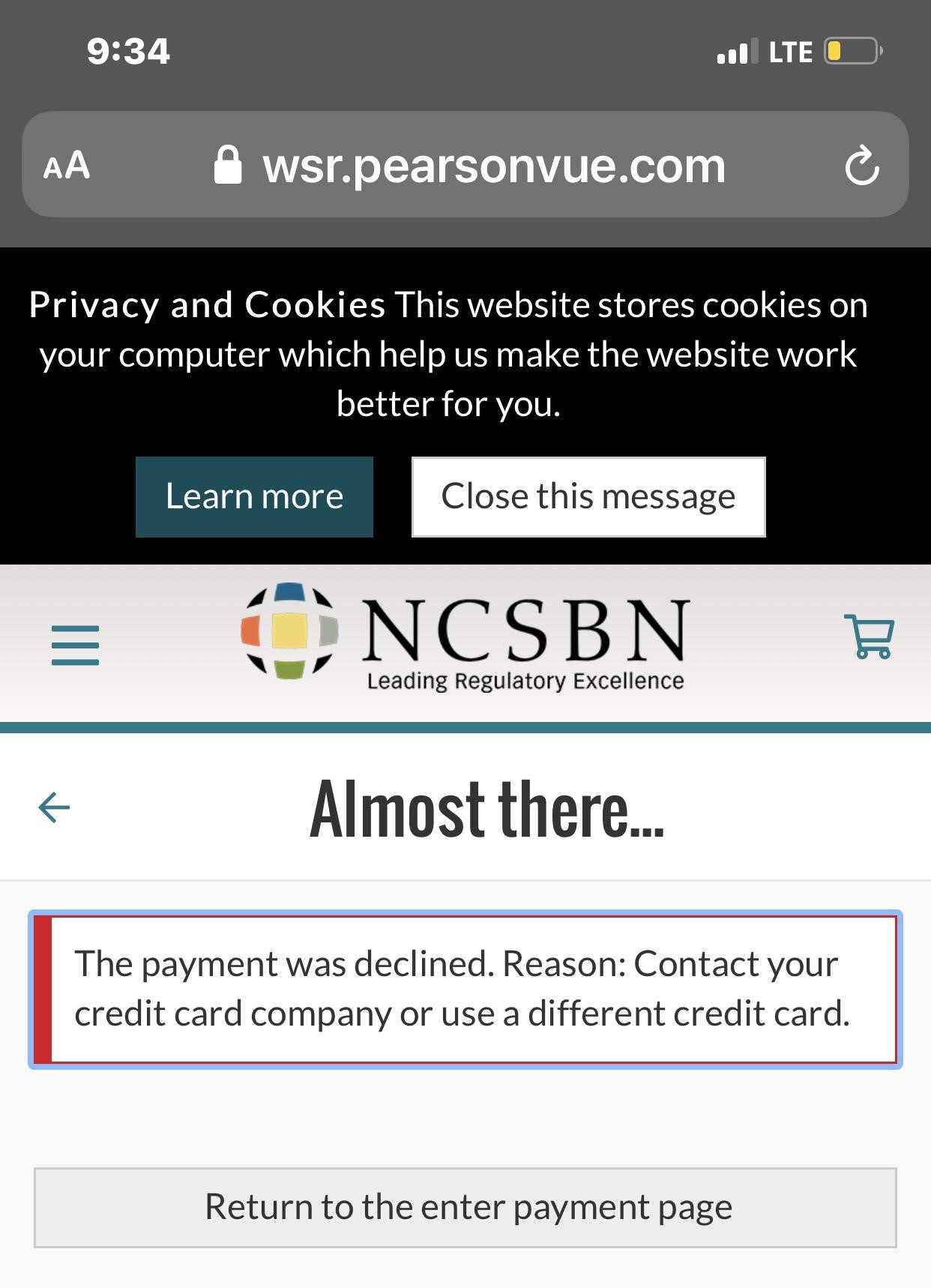
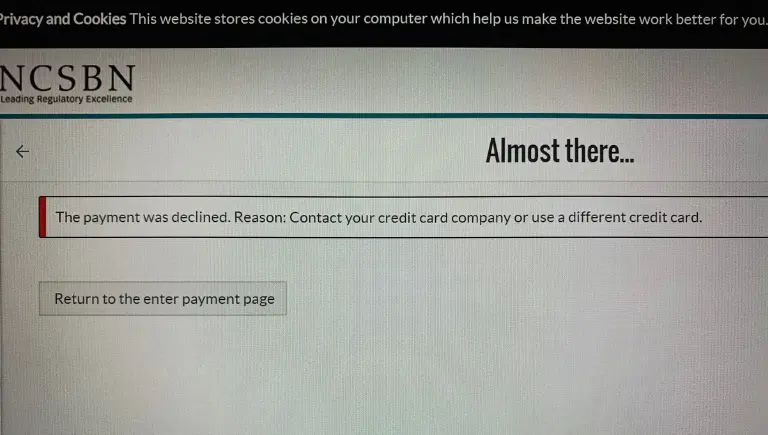
Examples of PVT bad popup after taking NCLEX exam
#3. Others Pop Up
- “The candidate currently has an open registration for this exam. A new registration cannot be created at this time.”
This message typically does not indicate pass or fail status; instead, it means that the system has not yet finalized the processing of the recent exam attempt. In this case, candidates are advised to wait a few more hours before attempting the Pearson Vue Trick again, allowing sufficient time for the system to update their exam status fully.
- “We’re unable to validate the entered payment card. please verify all card details and try again.”
This message typically suggests there may be an issue with the payment processing details rather than the candidate’s exam performance. While some interpret this as an indirect sign of failure, there are instances where candidates who received this message still passed the NCLEX.
- “Payment fields have been cleared, please reenter. The credit card number is invalid.”
While some may initially interpret this as a “bad pop-up” indicating a likely failure, it is important to recognize that this message strictly pertains to payment processing issues, such as entering incorrect credit card information. There are numerous instances where candidates receiving this bad pop up message have successfully passed the NCLEX.
How Accurate Is The Pearson Vue Trick?
The Pearson Vue Trick isn’t 100% accurate. While many students have claimed that the trick predicted their exam results, some candidates have reported false positives or false negatives.
Therefore, you should know that it’s not an official or guaranteed method of determining whether you passed or failed the NCLEX examination.
After researching and referring to reports, I’ve found the reasons for the inaccuracy of the Pearson Vue Trick. Here are the primary factors:
- Attempting It Too Early Or Too Late: The trick’s reliability can vary depending on when it’s used. Performing the PVT too soon after the exam may lead to false results, as the system might not have fully processed the completion. Conversely, if performed too late, the official results might influence the outcome.
- Internet Connectivity: A stable connection is crucial; disruptions can lead to errors that misrepresent the outcome.
- Mistakes Made While Performing The Trick: Accurate entry of information and correct navigation on the website are essential. Errors here can lead to incorrect indications.
- Changes Or Updates To The Pearson Vue System Or Website: Changes or updates to the Pearson Vue system can affect the trick’s functionality, particularly if maintenance temporarily alters features used in the PVT.
How Much Does The Pearson Vue Trick Cost?
The “Pearson Vue Trick” itself doesn’t directly cost anything as it involves manipulating the registration process on the Pearson Vue platform to potentially see a hint about your exam result without officially getting your score, meaning the only cost associated would be the standard exam registration fee you already paid to take the test.
Many people told me that: “Pearson Vue Trick Charged Me But I Passed“
This scenario might be more likely if there’s an error with the system’s recognition of your exam status, though it’s generally considered an unlikely outcome.
When candidates attempt the PVT and proceed to the point of potentially being charged (because they think they might not have passed), they’re engaging in a gamble. The National Council of State Boards of Nursing (NCSBN) doesn’t issue refunds for NCLEX registration fees under any circumstances.
Tip: To mitigate the risk of unintended charges, it’s essential to be cautious and stop before the final step that would confirm a new exam registration.
FAQs
You should wait at least 24 hours after taking the NCLEX exam before attempting the Pearson VUE trick. Doing the trick too soon could affect the results.
No, you cannot perform the “Pearson VUE trick” on any device; it is specifically designed to be attempted on the Pearson VUE platform itself, usually through a web browser, and relies on the system’s functionality to potentially reveal a passing or failing result based on the registration process after taking an exam – meaning you need access to your specific exam account on the Pearson VUE website to try it.
Yes, the Pearson VUE trick may still work in 2024
Yes, A “bad pop-up” generally indicates that you likely failed the NCLEX, as it means the system allows you to register for another exam attempt, suggesting you did not pass the previous one; however, this method is not 100% accurate and the only definitive way to know your result is to wait for your official score from your state board of nursing.
Tips When Doing The Pearson Vue Trick
As shared above, the Pearson Vue Trick is unreliable and may even lead to financial losses. Follow the tips below to avoid unnecessary expense:
- Use a different card expiration date: To avoid being charged, enter a different expiration date for your credit card when trying to re-register. If you pass the exam and get the “good” pop-up message, the system will decline your card due to the incorrect expiration date, ensuring you won’t lose money.
- Check Your Board of Nursing (BON): For the most reliable confirmation of your NCLEX results, regularly check your Board of Nursing’s official website. If your license appears there, you’ve officially passed. This method provides the most definitive and up-to-date information regarding your exam status.
- Wait for the right time: The best time to use the Pearson Vue Trick is 24 hours after you’ve taken the test. Doing it too soon may give you inaccurate results because your details may not be updated in the system yet.
From my experience, I have adhered to this strategy and found that the results produced by the Pearson Vue Trick after this waiting period align relatively well with my actual exam results. (I received the ‘good pop-up’ and passed on the first attempt)
Frank Barnes
Final Thought
The PVT is a method used by nursing candidates to try and predict if they’ve passed their NCLEX before official results are available.
Still, the trick isn’t 100% accurate. There have been instances where it has led candidates to incorrect assumptions about their exam outcomes not to mention financial risk.
If you’re in a state that participates in the NCLEX quick results, you can pay a nominal fee to get the unofficial results after the test 48 hours from Pearson Vue. It is the best and most accurate way to know your results in advance.
Good luck for all new nurses!


